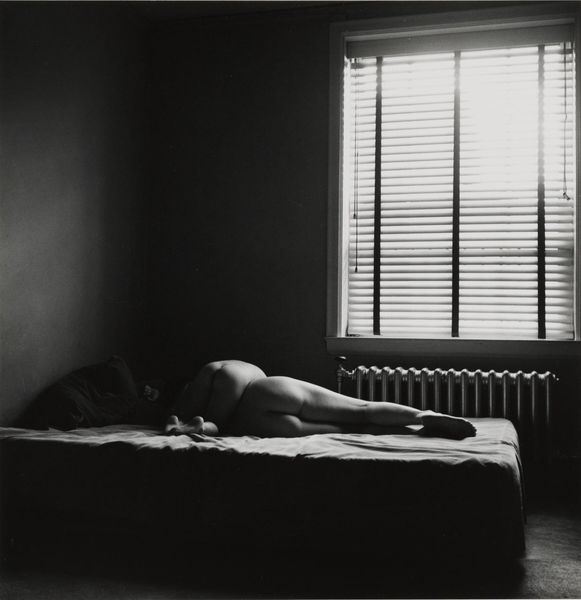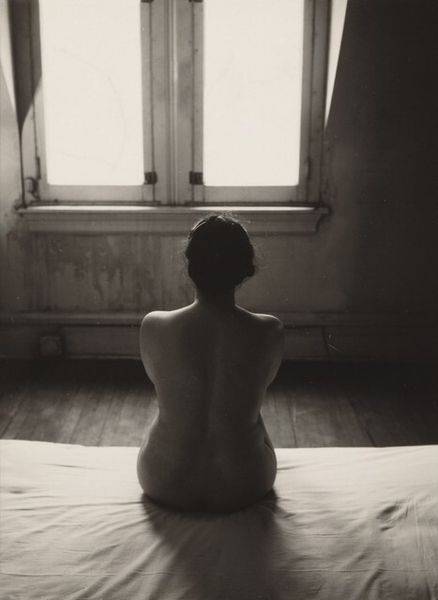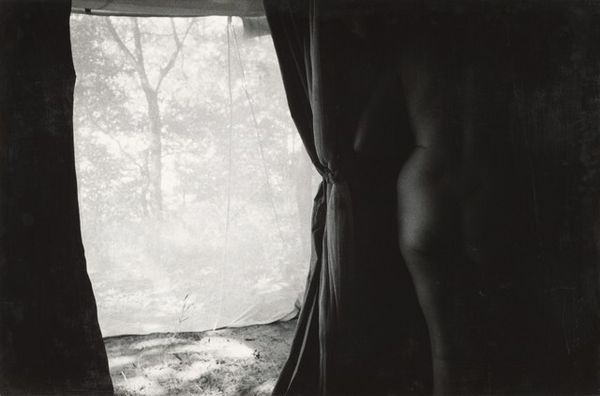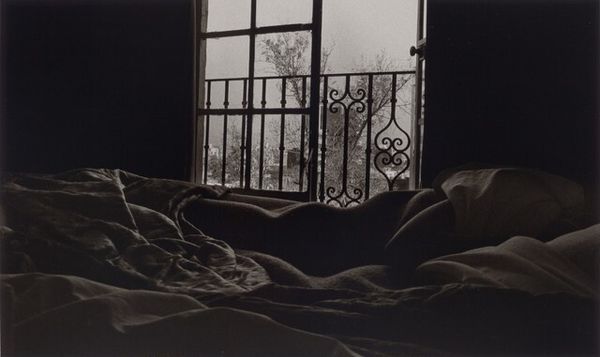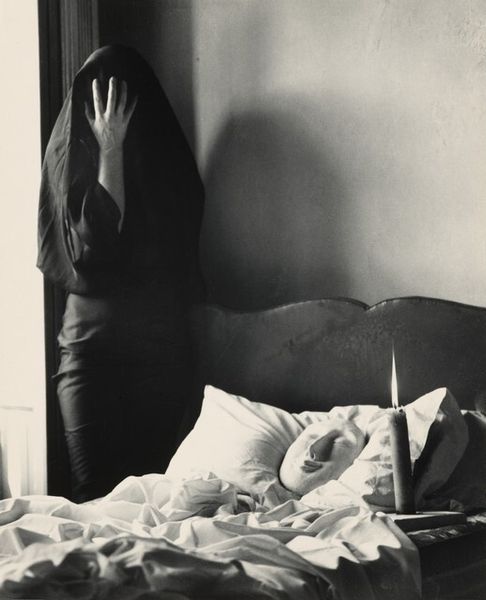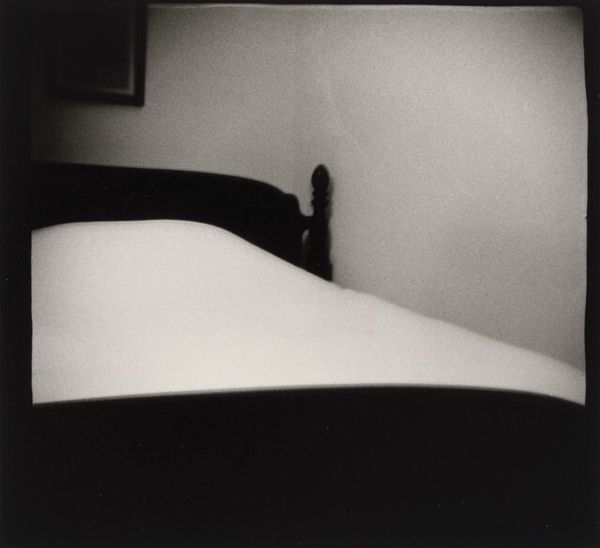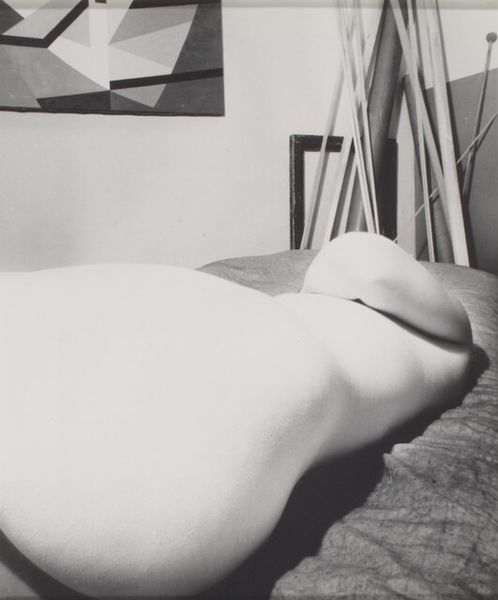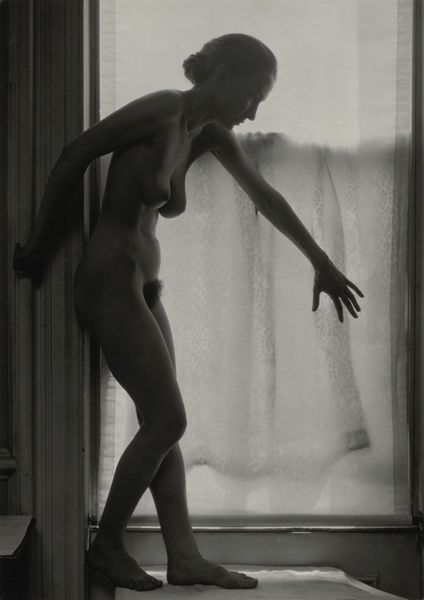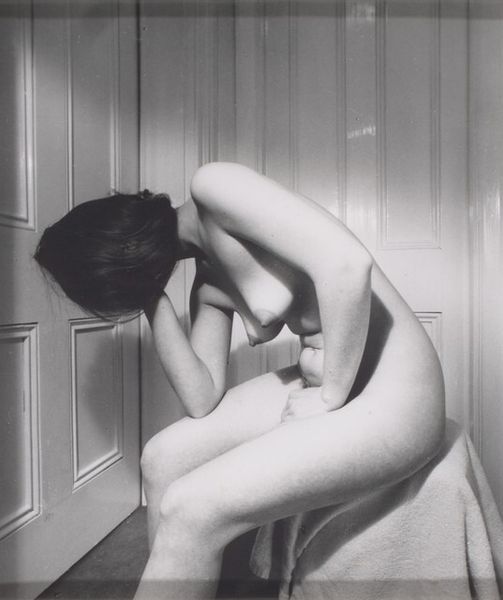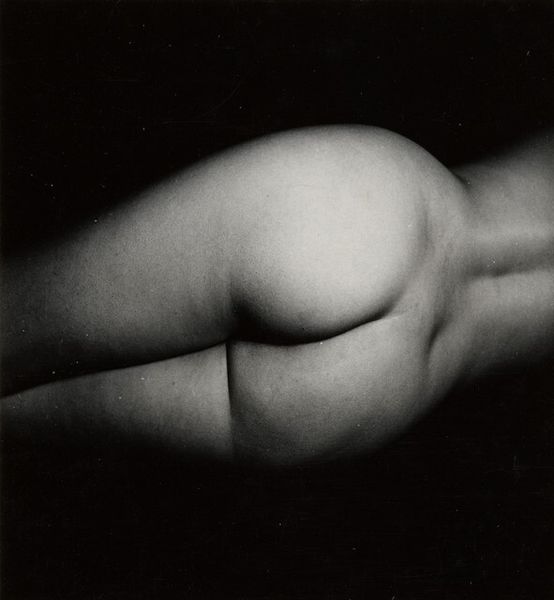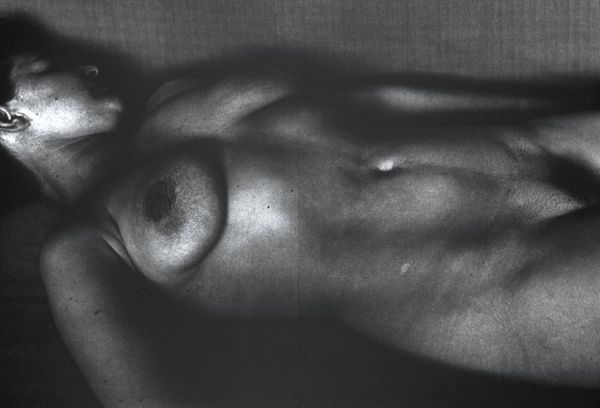
photography, gelatin-silver-print
#
portrait
#
abstract-expressionism
#
still-life-photography
#
film photography
#
street-photography
#
photography
#
intimism
#
gelatin-silver-print
#
monochrome photography
#
monochrome
#
nude
#
monochrome
Dimensions: sheet (trimmed to image): 16.4 x 16.3 cm (6 7/16 x 6 7/16 in.) mat: 35.56 x 27.94 cm (14 x 11 in.)
Copyright: National Gallery of Art: CC0 1.0
Curator: Here we have Harry Callahan’s "Eleanor, Chicago" from 1956, a gelatin silver print. What's your first impression? Editor: Striking. There's a stillness to it, almost austere. The rumpled sheets, the exposed radiator – it’s quite matter-of-fact in its depiction of domesticity, even with the nude figure. Curator: Precisely. Callahan was deeply influenced by Abstract Expressionism and the New Bauhaus movement, leading him to use techniques rooted in exploration and experimentation. These sensibilities challenge traditional notions of both intimacy and image creation in photography. Eleanor, his wife, was his most frequent subject. I think their creative partnership provides some really interesting layers to how we understand the artist’s gaze and representations of femininity. Editor: It makes me consider the production itself. The tangible process of gelatin silver printing, with its reliance on specific chemical reactions, gives this image a sort of labor that connects it, surprisingly, to the more industrial components of the bedroom. The starkness reinforces this almost forensic-like documentation of bodies, spaces, and materials. Curator: I think that that materiality is key to understand his intention to engage with taboo, as it's a nude in domestic space that disrupts the social roles of women within a patriarchal family structure. While the image may, on the surface, appear like a study of form and light, considering Callahan's involvement in progressive politics reveals a subtext that challenges gender expectations and the female body as a purely decorative object. Editor: Absolutely. And how interesting that the texture of the linen nearly mirrors the texture of skin. Both are subjects undergoing photographic transformation—each revealing their grain, each evidence of a system. The high art merges with what’s beneath, suggesting it. Curator: It certainly forces us to reconsider those supposed binaries, art/craft, intimate/public. The silver gelatin process allows for infinite manipulations, raising fascinating questions about artistic intentionality versus material determinism, particularly considering Callahan’s deep personal connection with Eleanor. Editor: It brings attention to the physical aspect of their co-creation. "Eleanor, Chicago," more than simply a representation, offers insights into the socio-economic, and artistic ecosystems involved in its existence. The picture seems, in a certain sense, aware of itself. Curator: The beauty of Callahan’s work resides, in part, in its capacity to continuously challenge preconceived notions. Editor: Agreed. It is something that definitely stimulates reflection.
Comments
No comments
Be the first to comment and join the conversation on the ultimate creative platform.
